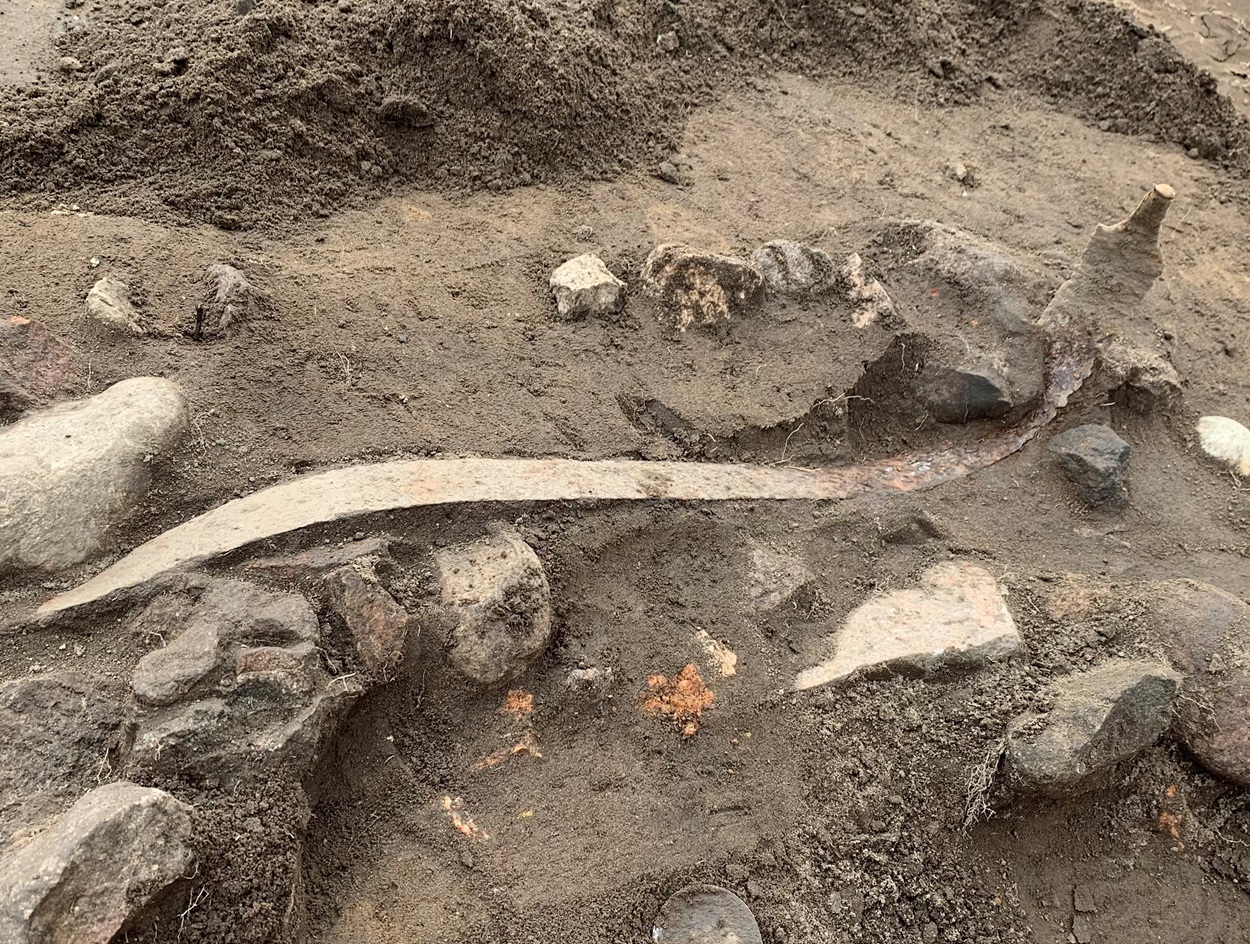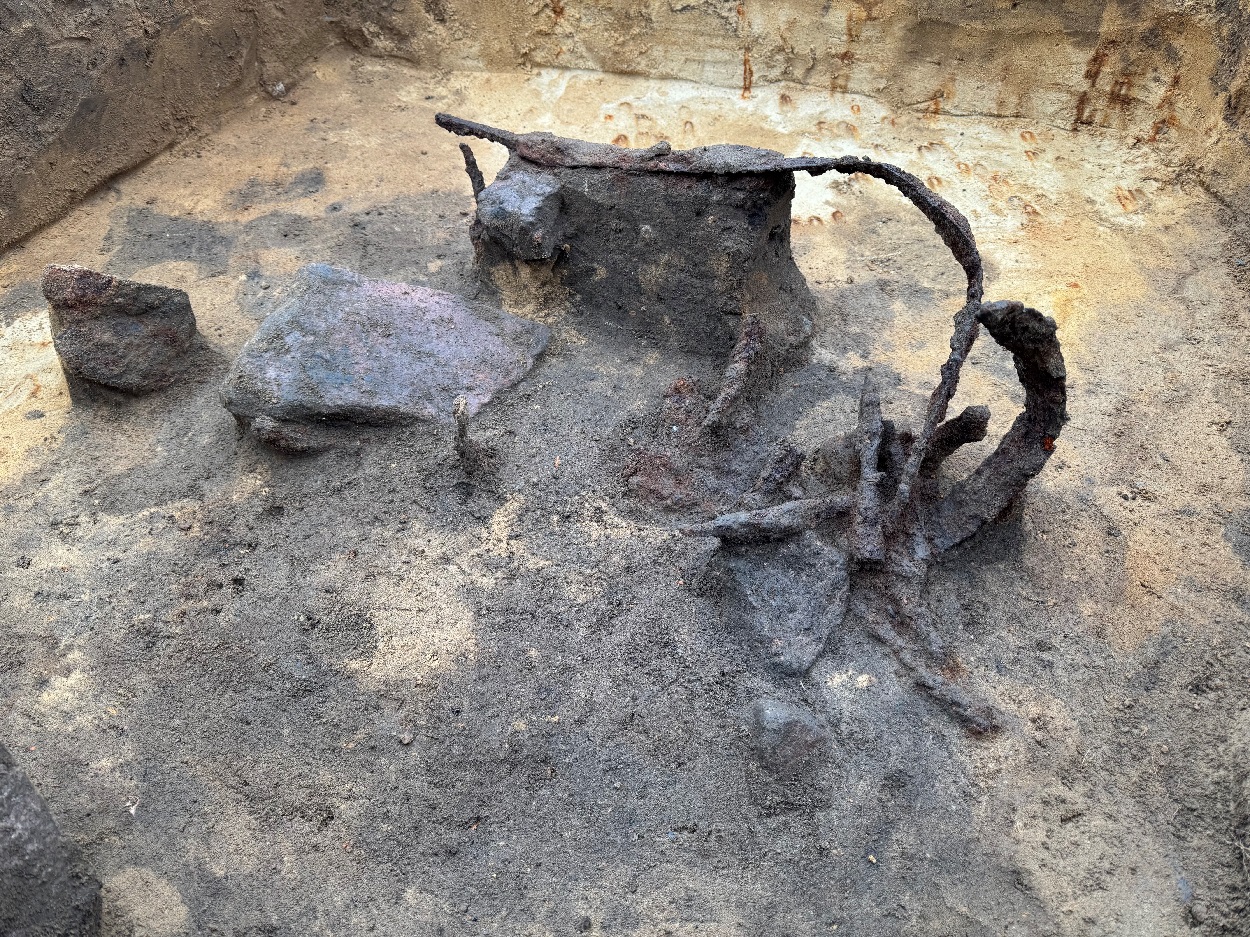Archaeologists have discovered a large arsenal of Iron Age weaponry during excavations for the expansion of the E45 motorway near Hedensted, Denmark.
Over 100 objects have been unearthed in the remains of two structures that date from the 6th century BC. Finds include lances, swords, spears, and the rare discovery of chainmail.
The site was a significant settlement, evidenced by the cultural layers in situ that are rich in animal bones, ceramics, production debris, and personal items. The abundance of weapons discovered affirms the settlement’s military importance.
Elias Witte Thomasen from the Vejle Museums, said: “From the very first surveys, we knew this was going to be extraordinary, but the excavation has exceeded all our expectations.”
“The sheer number of weapons is astonishing, but what fascinates me most is the glimpse they provide into the societal structure and daily life of the Iron Age. We suddenly feel very close to the people who lived here 1,500 years ago,” added Thomasen.

Archaeologists suggest that the weapons were part of a ritual sacrifice, where in one of the structures the weapons were intentionally deposited in the post holes while it was being dismantled. The same is said for the second building, except here they were deposited during its construction.
“These deposits suggest ceremonial or sacrificial acts linked to the residence of a chieftain, rather than activities like weapons production or barracks use,” said the archaeologists.
Further studies will determine if the weapons were made locally, or if they were taken as prizes during times of conflict and kept as booty – a practice well-documented in the South Scandinavian Iron Age.
In addition to the weaponry, archaeologists found fragments of two distinctive bronze neck rings. These bear a resemblance to motifs on gold bracteates from the Vindelev Hoard and other depictions of Iron Age rulers.
Header Image Credit : Vejle Museums
Sources : Vejle Museums





